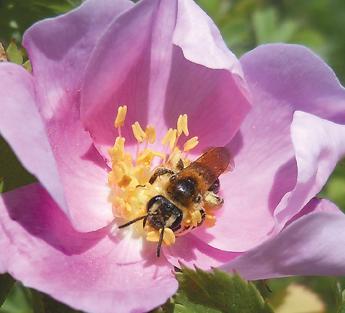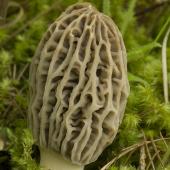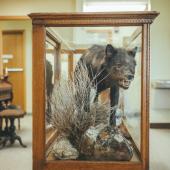
Montanans know that winter’s stubborn grip always gives way to spring, and with the returning warmth comes a bounty of garden and wilderness that makes the long, cold months seem a just tax for such abundance. Our tongues soon will revel in the tart sting of rhubarb from backyard gardens, cherries from Flathead Valley orchards, plums from neighborhood trees, and sweet, dark huckleberries in the Swan Valley, just as our eyes find a comparable feast in the jubilant sprawl of wildflowers. The reliable building blocks of biology—sun, water, and air—lay the groundwork for this proliferation of growth, but it’s also thanks to pollinators that plants are able to thrive. The creatures that do this vital work of sustaining life on Earth include bees, birds, insects, and bats.

Given the vital nature of pollinator activity, it’s been an alarming realization in recent years that many of these critical species have begun to dwindle, or even disappear. Over the past two decades, more than half the managed honeybee colonies in this country alone have been lost. There are dozens of theories that seek to explain this phenomenon, including pesticide use, invasive species, habitat loss, parasites and disease, but the bottom line is that it’s hard to name a concrete reason for why pollinators are so much at risk. What we do understand is that without pollinators, life on earth would be much less fruitful.
So, how to go about solving a problem with no clear explanation? One answer is ground—level and pragmatic: start by fostering pollinator habitats, building and tending gardens that are rich in the plants that these species favor. Another option that may exist in conjunction with these efforts is to increase collaboration between local communities, scientists, and conservation groups. Here in Montana, a local nonprofit called The Tributary Fund is seeking to do exactly that, by recognizing the indelible ties between culture, community, and the natural world.

The Tributary Fund (TTF) is a nonprofit organization dedicated to fostering connections between religious, scientific, and local leaders around the world in the interest of wildlife habitat protection and sustainable community development. The work that TTF undertakes may vary according the faiths, species, and regions involved, but between those borders there is fertile common ground. Conservation is a recurrent theme in almost every sacred text on Earth. In light of this enduring message, TTF supports their ground-level efforts with an eye to the enduring relevance of faith—in alignment with science—in crafting meaningful conservation work.

Though TTF operates on a global scale, with currently active projects in Mongolia and Bhutan, the group has its roots firmly set in Bozeman, Montana. There are many potent opportunities to catalyze the crossroads of conservation and community within this state. For example, the Pollinator Partnership, a partner organization of TTF that is devoted to supporting pollinator health through the avenues of research, conservation, and education, has worked with the Gallatin Valley Land Trust to create the Gallagator Trail pollinator garden. They have also supported numerous research and outreach efforts to assess the state of pollinator health and public awareness within Montana and many other ecoregions.
Betsy Gaines Quammen, founder and president of TTF, is currently working in collaboration with the Pollinator Partnership as a national co-chair for the Faith Outreach Task Force. The Task Force is a new group charged with creating and distributing outreach information to educate and empower faith leaders on pollinator protection efforts. Says Gaines Quammen of the relevance of this work: “Bees, birds, butterflies, and gardens figure prominently in the Buddhist, Jewish, Christian, and Muslim sacred texts. To build native gardens and create habitat for species that insure our food sources is a perfect fit for faiths.” As Gaines Quammen notes, pollinators represent a powerful synthesis of conservation and faith traditions. Bees appear multiple times in the Bible, Torah and Qur’an as a symbol of selfless service, with the sweetness of their efforts (honey) representing divine kindness and reward. In the broader sense, just as faith is an integral part of human life across the globe, so too is the work of pollinators; the former nurtures our spirits while the latter nourishes our bodies.
Pollinators are vital to our lives and livelihoods—almost 80% of crops across the globe are dependent on pollinating animals, and this type of produce generates three billion dollars a year for markets of the United States. As many as one in every three bites of food that humans consume may be directly attributed to pollinator species simply doing what they were born to do. From the ecological stance, pollinators are crucial to the survival of native vegetation, and by extension, countless animal species. As seen in sacred texts, humans have long appreciated the worth of pollinators, and we may still bring that worth to bear in the modern context, from the parallel roots of science and spiritual tradition.

Faith-based and scientific communities are not so far distanced as public perception may hold; after all, both represent a powerful lens of human understanding. The issue of pollinator conservation presents a perfect example of opportunities to build on that common foundation. Some of the projects that TTF envisions as needful work for conservationists and faith communities alike include maintenance of pollinator gardens such as the one currently existing on the Gallagator Trail. A faith volunteer team, for instance, could work under the guidance of local conservation experts to maintain those gardens on a weekly basis. To that end, Montana landscape designer Linda Iverson is currently working with TTF to create a manual identifying and detailing the care of each plant in the Gallagator garden. Just a few volunteers from local congregations would be more than able to make such gardens thriving hubs of pollinator activity.
Community gardens may seem like a very small step against the looming threats to pollinator health, but many small steps could be a fitting course to take in the interest of many small, significant forms of life. Each adds up to a much greater whole. Similarly, the manifold branches of faith spring from a common root, and by the strength of their central growth have nourished the course of human history. It’s no great stretch of the imagination to see the echoes of older things in our daily efforts—a trace of Eden in a pollinator garden, a touch of grace in a Montana meadow, a hint of heaven in the Big Sky overhead. Whether you frame your values by science or spirit or somewhere in between, you can believe in the bounty of this beautiful place we call home, and the tireless work of pollinators that allows it to thrive.












Leave a Comment Here